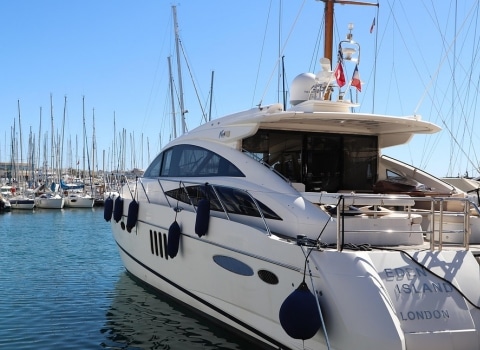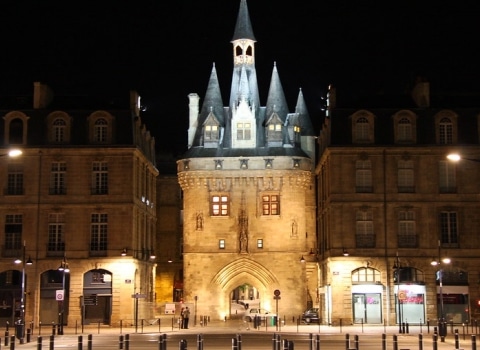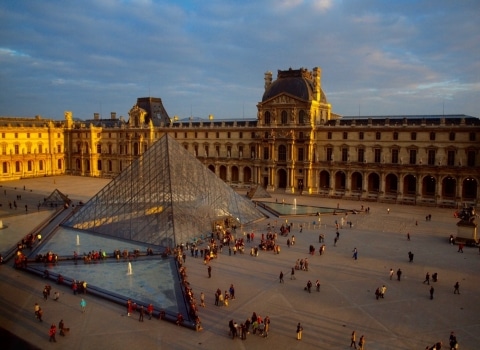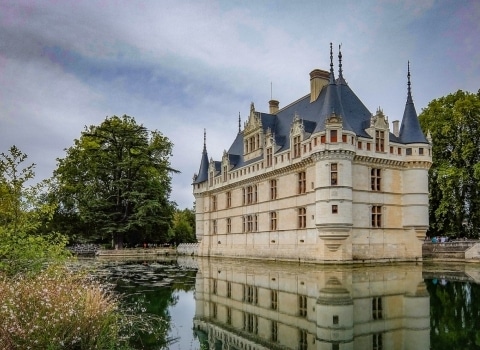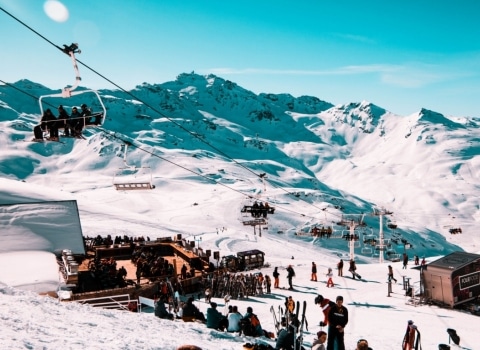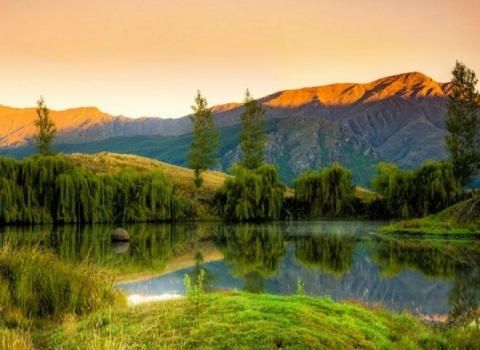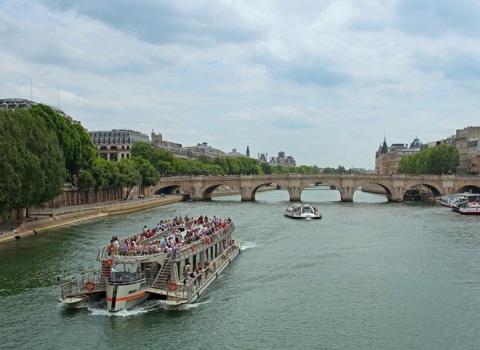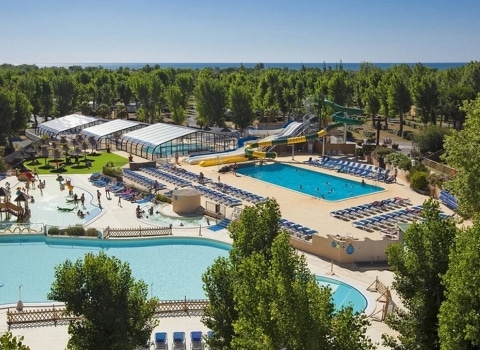Exploring Lyon Beyond the Obvious
Hidden Spots in Lyon aren’t marked by signs or crowds. They live quietly—behind doorways, under arches, along streets that twist without warning. Welcome to Lyon, a city where every alley hides a surprise and every neighborhood holds unsuspected treasures. The rhythm of the city unfolds slowly. At first, it might seem familiar. The basilica on the hill. The cobbled lanes of Vieux Lyon. A table set for lunch in a classic bouchon. But look again. There’s more.
Spend a few days here, and patterns start to shift. Walls become stories. Gardens appear where you didn’t expect them. A narrow passage, barely marked, leads to a courtyard with ivy and silence. These aren’t the places that come up first on a list. But they stay longer.
For those drawn to the quiet thrill of the unexpected—murals five stories high, traboules that fold time into stone, or a staircase that seems to have no real destination—Lyon rewards attention. It’s not just for history lovers or food obsessives, though it holds plenty for both. It’s for anyone willing to follow a small curiosity a little too far.
This isn’t a tour. Not exactly. More of a suggestion to wander. To pause. To get slightly lost, maybe. That’s how Lyon shows its other face. And once seen, it’s hard to forget.
Lyon’s Secrets Aren’t All in the Guidebooks
The Lyon fresco
It takes up nearly the entire side of a building. At first, from across the street, it might seem like a crowd gathered on balconies, leaning out of windows, caught mid-conversation. But step closer, and it becomes clear—these aren’t passersby. They’re painted. Thirty figures from Lyon’s past, rendered in uncanny detail, stand frozen in this massive mural.
The Fresque des Lyonnais, completed in 1994 by the collective CitéCréation, blends eras in a single, dizzying tableau. There’s Paul Bocuse in his chef’s whites. Auguste Lumière, holding a camera. Claude Bernard, notebook in hand. They appear not as statues or stiff portraits, but alive—caught in the everyday, part of the city they helped shape.
Why it’s a must-see: It’s not just about who’s on the wall. It’s about what the mural does—how it folds time into a single frame, how it anchors history in the rhythm of a neighborhood. People pause here. They point, compare notes, sometimes argue about who’s who. For those drawn to street art or the layered identity of a city, it’s worth slowing down to take it in. And from here, most of the peninsula opens easily on foot.
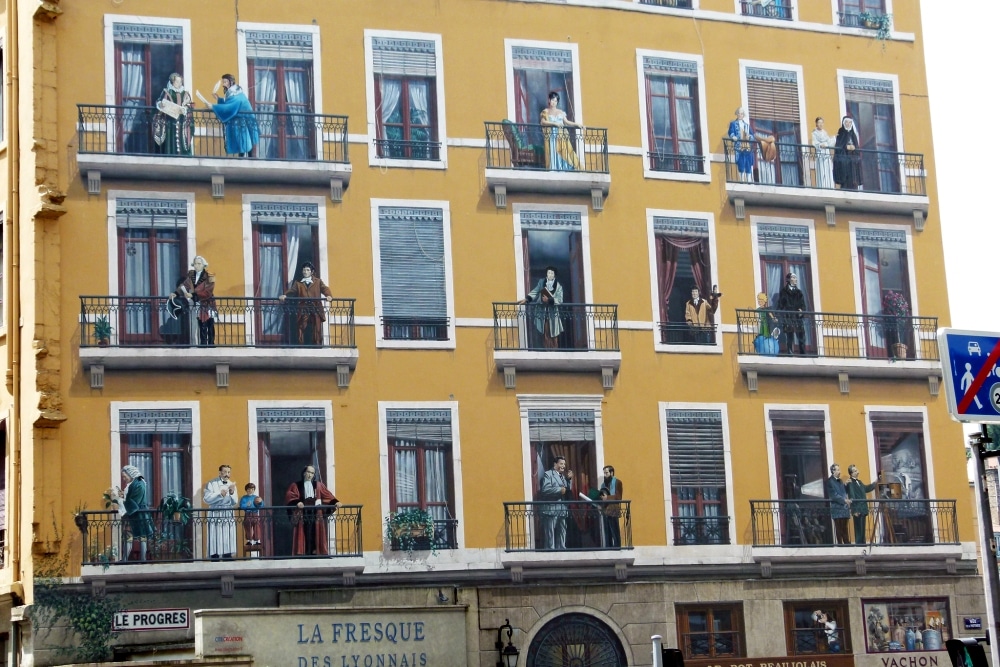
The Passage Thiaffait
It’s easy to walk past. Just a small archway on a quiet street, no grand sign, no crowd gathering. But on the other side, the Passage Thiaffait unfolds like a different pace of Lyon—half atelier, half secret.
Built in the early 1800s, then nearly forgotten, the passage was brought back to life in the ’90s as the “Village des Créateurs.” Now it hums quietly with a different energy—part fashion lab, part art corridor. Young designers work behind open doors, surrounded by textiles, sketches, tools. It’s not polished. That’s what makes it interesting.
Local shops and artisans to visit: Each storefront holds a distinct voice—hand-stitched coats, bold jewelry, notebooks that look like they came from another decade. Walk slowly. You might meet someone working at the back, maybe sketching a new cut, maybe soldering a ring. Some shops welcome conversation. Others, you just browse and breathe it in. It’s not made for mass tourism. Which is probably why it feels so alive.
The Secrets of Old Lyon
Les Traboules
They slip quietly through buildings, linking streets like whispered shortcuts. The traboules of Old Lyon, once practical passageways for silk workers hauling bolts of fabric, now serve a different kind of purpose. Worn stone steps. Curved archways. Courtyards that seem to pause time. These covered corridors, some hidden behind wooden doors or unmarked gates, have been around since the Renaissance. During the Second World War, they took on a new role—safe routes for Resistance fighters, invisible to the untrained eye.
How to explore them: Exploring the traboules is rarely straightforward. And that’s the point. Start in the Saint-Jean district, where a cluster of them is still open to the public. Keep an eye out for small brass plaques—easy to miss—or follow a group that looks like they know where they’re going. For a deeper dive, local tour guides in Lyon can trace these routes with stories, dates, and quiet moments that reveal more than maps ever could.
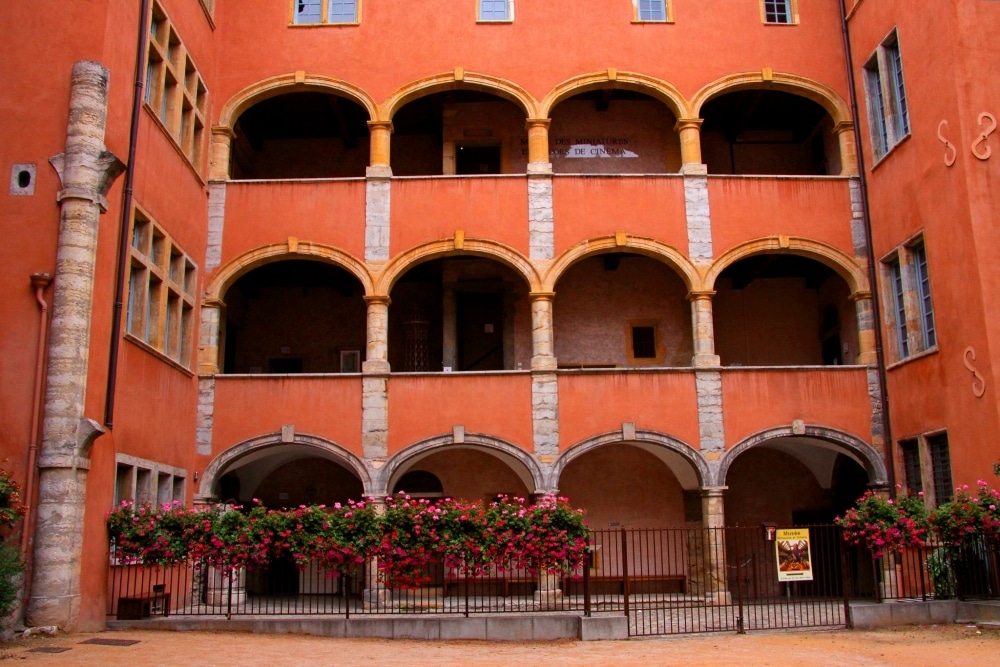
The Saint-Jean Archaeological Garden
Just behind the cathedral, in a patch of quiet most tourists overlook, lies the Saint-Jean Archaeological Garden. It’s not dramatic. No sweeping vistas or towering ruins. But among the stones, fragments, and foundations—some Roman, others medieval—there’s something grounding. A slow, thoughtful kind of history.
Best times to visit: The garden has its moods. Mornings, especially in spring, feel still and clear, with birdsong and the smell of damp earth. That’s when the old stones seem closest to speaking. There’s no rush. Guided tours happen regularly, offering a glimpse into layers of Lyon that are too often walked over without notice. The space invites a pause. A different rhythm. One that makes the past feel less distant.
The Curiosities of Croix-Rousse
The Wall of the Canuts
Climbing the slopes of Croix-Rousse, the city starts to shift—more lived-in, less polished. And then, almost suddenly, a wall that seems to breathe. The Mur des Canuts isn’t just big. It’s detailed, deliberate. At over 1,200 square meters, this mural maps out a slice of Lyon’s silk-working past. Look closer—windows open into scenes that never existed, staircases lead nowhere, and yet everything feels real.
Significance and anecdotes: The wall is more than a painting. It’s a conversation—between eras, between classes. It remembers the canuts and their fight for dignity in work, a struggle that shook Lyon in the 1800s. Every time the neighborhood changes, the mural changes too. Updated faces, new shop signs, added balconies. Like the quartier it belongs to, it refuses to stay still.
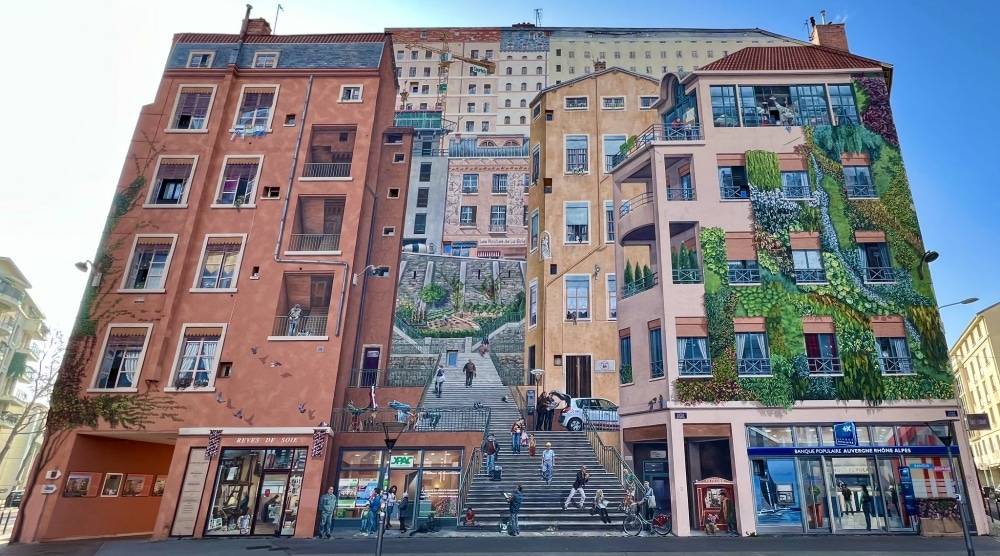
The House of the Canuts
It doesn’t tower or call out. The Maison des Canuts sits unassumingly on a corner, yet it holds the threads of a whole chapter of Lyon’s past. Inside, the story of silk comes alive—not the luxury end, but the work behind it. The looms still function. The tools still clack. There’s dust, texture, stories told in fibers.
Workshops and guided tours: More than just displays, the House offers something tangible. A workshop where hands move through techniques once passed from one weaver to the next. The guides? Not touristic. They speak like people who care, who grew up around this history. Some visits stretch into the neighborhood itself—past tall windows built for looms, through courtyards where workers once lived. It’s not glossy. But it stays with you.
Unusual Discoveries in the Confluence District
The Orange Cube
In the southern stretch of Lyon, where old warehouses once stood, something unexpected catches the eye. Bright orange. Hollowed by circles. The Orange Cube stands like a fragment of the future—bold, geometric, a bit surreal. Created by Jakob + MacFarlane, this strange box plays with air and light, pulling both into its core. From inside, glimpses of the river, the sky, the city beyond.
Exploring the building doesn’t take long, yet it leaves an impression. Offices. Exhibition spaces. A terrace that feels almost suspended. Everything shaped with intent. The cut-outs aren’t random, and neither is the bold color—it speaks to the industrial past of the district, and to the desire to reimagine it.
Why it attracts the curious: People don’t walk past it. They stop, look up, try to make sense of the voids and shadows. It’s a magnet for photographers, designers, anyone drawn to what doesn’t quite fit. But beyond the visuals, there’s a sense that this place signals something. A shift. Around it, other structures—green cubes, black slabs—form a puzzle of modernity. And inside, the occasional art event or installation breaks the stillness. No two visits feel the same.
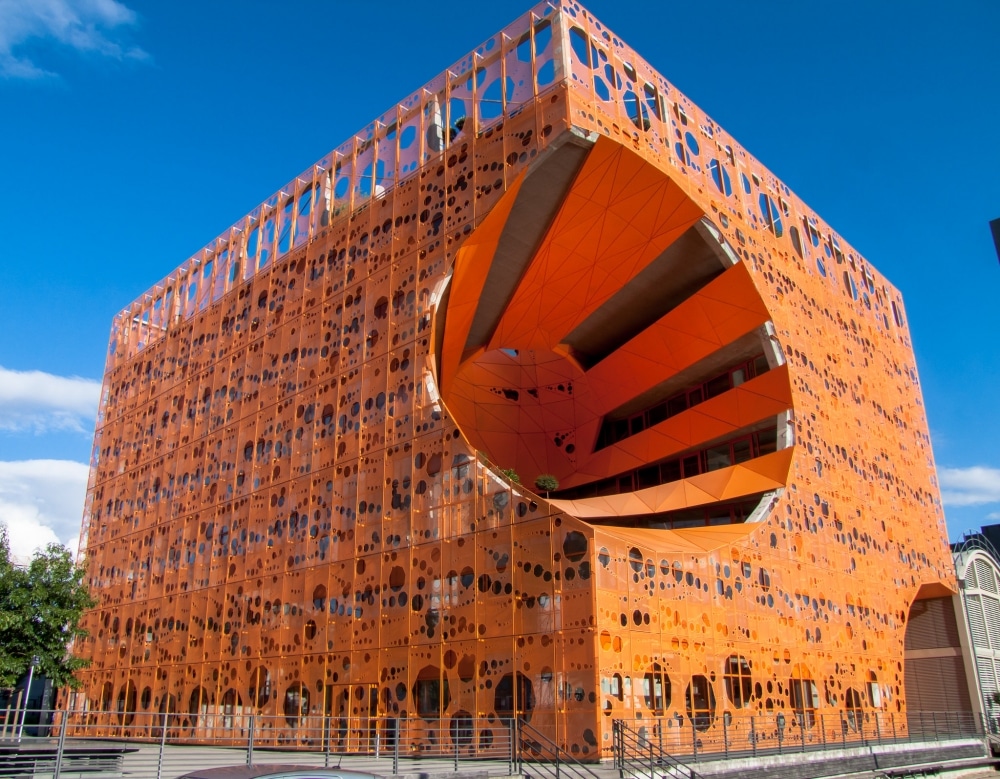
The Confluences Museum
Where the Rhône and Saône meet, the Musée des Confluences rises like a floating shard. Not elegant. Not symmetrical. But magnetic. Its skin—glass, metal, stone—catches the light in odd ways, as if it were never meant to sit still. The museum feels like motion, like a thought taking shape.
Inside, the structure opens up. Galleries stretch wide, inviting questions more than answers. Human evolution, cultural rituals, deep time. Exhibits layer stories across disciplines—science beside myth, bones beside beliefs.
Interactive experiences not to be missed: At the Musée des Confluences, you don’t just read facts. You move, touch, test. The evolution space—part mirror, part memory—offers a chance to see yourself among ancestors. Workshops for kids (and not just for kids) unfold with fossils, microscopes, playful experiments. And in the “Théâtre de la Science,” lights dim, projections bloom across the room, and suddenly, the universe feels a little closer. It’s not always easy to explain what this museum is. But that’s also part of why it stays with you.
Lesser-known Parks and Gardens
The Parc de la Tête d’Or – Tropical greenhouses
Just past the lake, behind iron gates and palm silhouettes, the Tropical Greenhouses offer another climate entirely. Warm air, a hint of humidity, that sweet scent of damp soil and green leaves. Built from glass and steel, these structures shelter ecosystems rarely seen outside the equator.
Inside, paths curve through thick foliage. Orchids dangle like secrets. Giant ferns arch overhead. Some rooms echo with birdsong, others hum with the quiet flutter of butterflies. And turtles—always a surprise—bask under soft light. It’s a strange kind of stillness. Not silent. Just slow.
Activities to do on site: The visit can be passive—wandering through, taking in the colors—or active. Guided tours are scheduled often, where botanists explain what grows and why. For children, there are playful workshops that plant curiosity like a seed. And for photographers, the light inside is a dream: filtered, changeable, soft. In winter, when the rest of the city pulls on coats, this warm pocket of jungle feels almost surreal. Not far, but entirely elsewhere.
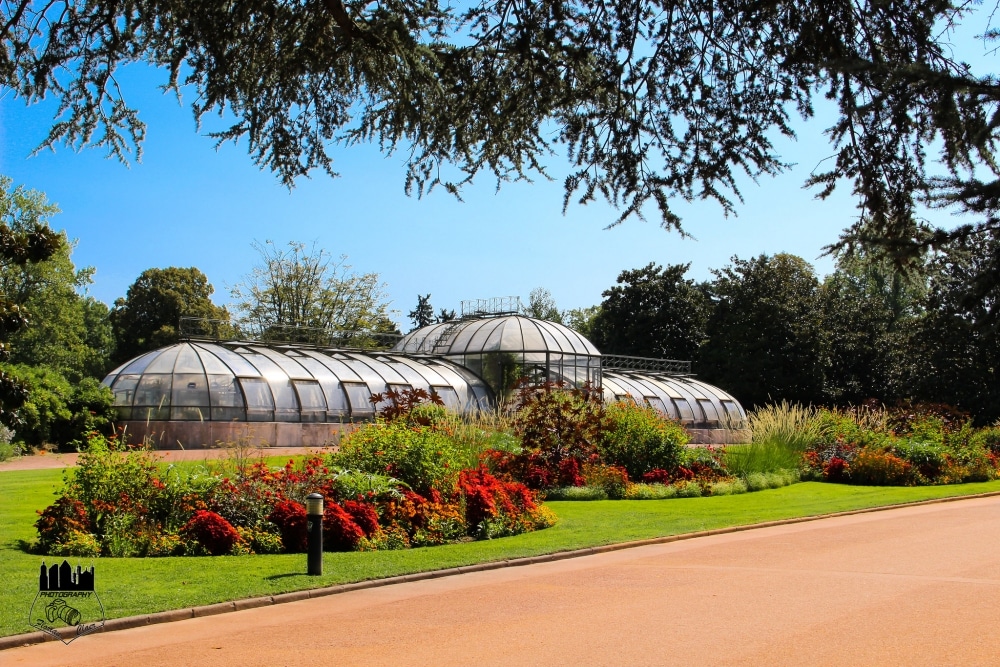
The Rosa Mir Garden
It’s easy to miss. Just a narrow gate in the Croix-Rousse, behind a stone wall. But step inside, and the world tilts. Shells line the walls, thick as bark. Stones and coral curl around fountains. There are mosaics, yes, but not the neat kind. These twist, loop, sprawl. Nothing is perfect. Everything is intentional.
Built by Jules Senis, a Spanish mason and survivor of illness, the Rosa Mir Garden is more than a tribute to his mother—it’s a message in texture. Twenty years of hands placing one thing beside another, not to impress, but to remember. The space is small. Yet it stretches in feeling.
Best times to visit: Spring sharpens the contrast—cacti bloom, shadows fall just right, the mosaics shimmer a little more. Early mornings feel almost sacred. Visits are limited, sometimes by season, often by space. Check ahead. Plan a little. Because once you’re inside, you’ll want to linger. There’s no plaque that says what it all means. But maybe that’s the point.
Unique experiences to share in Lyon
The riverboats on the Saône
Gliding down the Saône, the city looks different. Softer. Quieter. From a riverboat, Lyon reveals another rhythm, slower than the street, more reflective. The Bateaux-Mouches offer both sightseeing cruises and candlelit dinners—two ways to see the same banks, but worlds apart in atmosphere.
During the day, the boats trace a path past familiar landmarks. Fourvière, rising above the rooftops. The Renaissance facades of Vieux Lyon. Quays that shift from cobblestone to concrete as the Presqu’île unfolds. A voice over the speakers offers stories—some known, some not—about architecture, resistance, silk, saints.
As evening settles in, the river changes. Lights shimmer on the surface. Conversations hush. Onboard, dinner begins. Dishes inspired by local flavors—refined but not overly formal—arrive course by course. There’s something cinematic about it. Food, water, city lights. It lingers.
Stunning views of the city: From this perspective, the city feels almost foreign. Bridges overhead appear grander. The Confluence looks sharper, more modern. Vieux Lyon softens in the golden glow. And on the slopes, greenery wraps around stone. It’s the kind of view that doesn’t just invite photos—it alters memory. What was familiar becomes curious again.
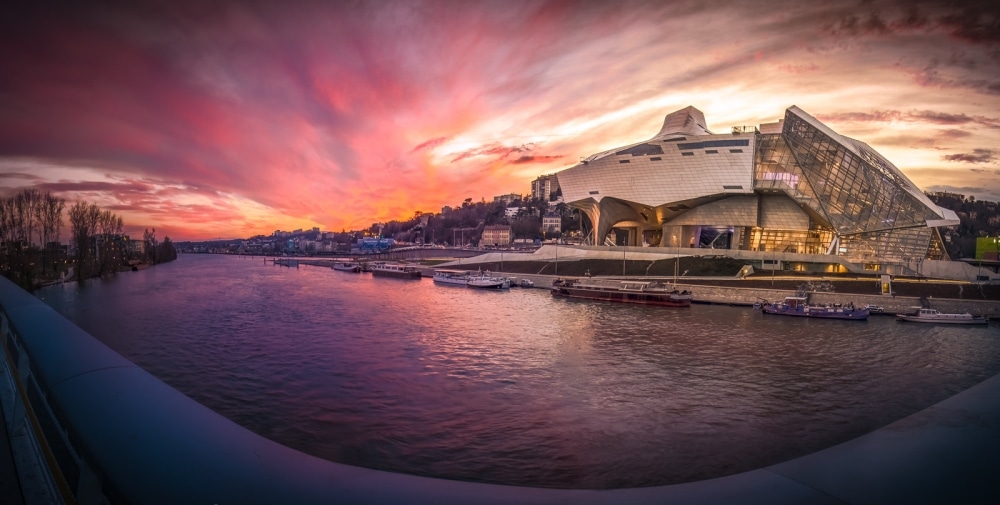
The Festival of Lights
Every December, Lyon becomes something else entirely. For four nights, the Festival of Lights (Fête des Lumières) reshapes the city. It isn’t just decoration—it’s transformation. Streets become stages. Facades become canvas. Light replaces language.
The roots of the event go deep—back to 1852, to a moment when candles flickered in windows in honor of the Virgin Mary. But what it’s become is something between celebration and spectacle. Artists arrive from around the world, each with their own visions of light, space, movement.
Activities and shows not to be missed: Some places draw crowds no matter the hour. The Saint-Jean Cathedral—its stones lit by projections that ripple, twist, tell impossible stories. Place des Terreaux—an explosion of animation across every surface. At Place Bellecour, the ferris wheel turns above shifting colors and soundscapes. But the festival’s quieter moments often leave the strongest trace. An alley suddenly alive with soft flickers. A park bench beneath a canopy of floating orbs.
There’s no set path. Some follow the light trails, maps in hand. Others just walk, pulled by sound or glow. And almost everyone, at some point, stops to light a candle—simple, small. The gesture matters. It connects the present to something older, more intimate.
Artistic and Alternative Places
Subsistences
Down by the Saône, in the shell of a 17th-century convent, something strange is always happening. Les Subsistances is neither gallery nor theater nor school, but holds pieces of all three. It’s a space for risk. For what doesn’t quite fit elsewhere.
Inside, artists rehearse with no clear premiere. Writers speak ideas aloud before they’re polished. Rooms shift between installations and workshops. The stone walls still breathe a little of their past, but what happens here belongs to now—and maybe to what’s next.
Cultural programming and events: The lineup is always changing. One month, a dance performance that refuses narrative. The next, a conference on future cities. There are festivals too—loose in structure, rich in intent. The audience isn’t passive. Not here. People come to think, question, linger. Even if they don’t always know what they’re walking into. Which is the point.
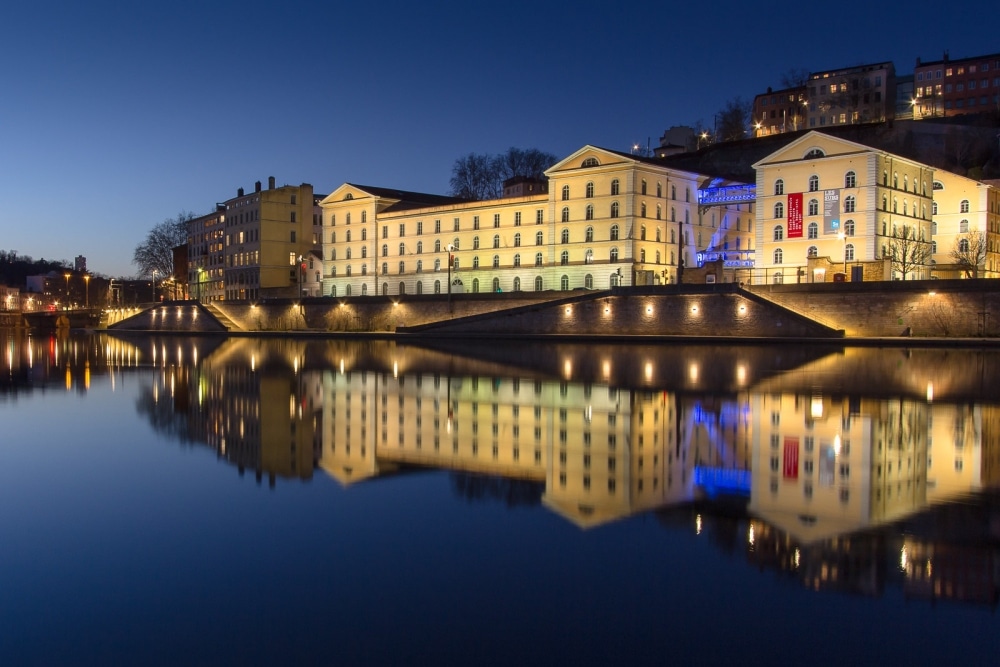
The Periscope
Tucked into a side street of Croix-Rousse, Le Périscope pulses after dark. Small stage, low ceiling, no separation between audience and artist. Music here feels immediate—sometimes raw, often unexpected.
Genres don’t really define the space. Jazz one night, electronic loops the next. A singer whose lyrics shift between French and something else. This is a place for sound experiments. For energy. For that rare thing: a room that listens.
Concerts and atmosphere: There’s intimacy in the way it’s built. No backstage distance, no formality. Just people, gathered around shared curiosity. Even on slower nights, the atmosphere carries. It’s the kind of venue where the act isn’t just performing—they’re feeling the same room, adjusting, responding. For anyone chasing something different, something unsanitized, this is where it lives.
Between Les Subsistances and Le Périscope, Lyon’s cultural pulse runs deep. Not in the headlines, maybe. But real. Alive. Always a little offbeat.
Exploration of Emerging Neighborhoods
The Montchat District
East of Lyon’s center, Montchat drifts quietly away from the usual urban rhythm. It doesn’t push to impress. The charm is softer—cobbled lanes, old stone façades, discreet gardens behind wrought-iron gates. Some call it village-like. That fits. Montchat feels lived-in, unhurried. Like it’s been quietly doing its thing all along, regardless of what happens downtown.
Small bakeries and neighborhood cafés line the streets. Children pass on scooters. Neighbors stop mid-crosswalk to talk. It’s not made for tourists, which is maybe why it appeals so much to those looking for something real.
Markets and green spaces:
At the weekly market, conversations matter as much as what’s sold. Local producers, small-scale cheese makers, the kind of bread that runs out by noon. It’s more than shopping—it’s ritual. A rhythm that anchors the week.
Montchat is also green. Not dramatically so, but in ways that matter. Pocket parks where old men read. Benches that catch the right light. And just nearby, the vast Parc de la Tête d’Or opens up—perfect for when quiet isn’t quite enough, and something wilder is needed.
There’s no landmark here, no single reason to come. Montchat’s appeal lies in its whole. A gentle mix of life, light, and small moments that add up.
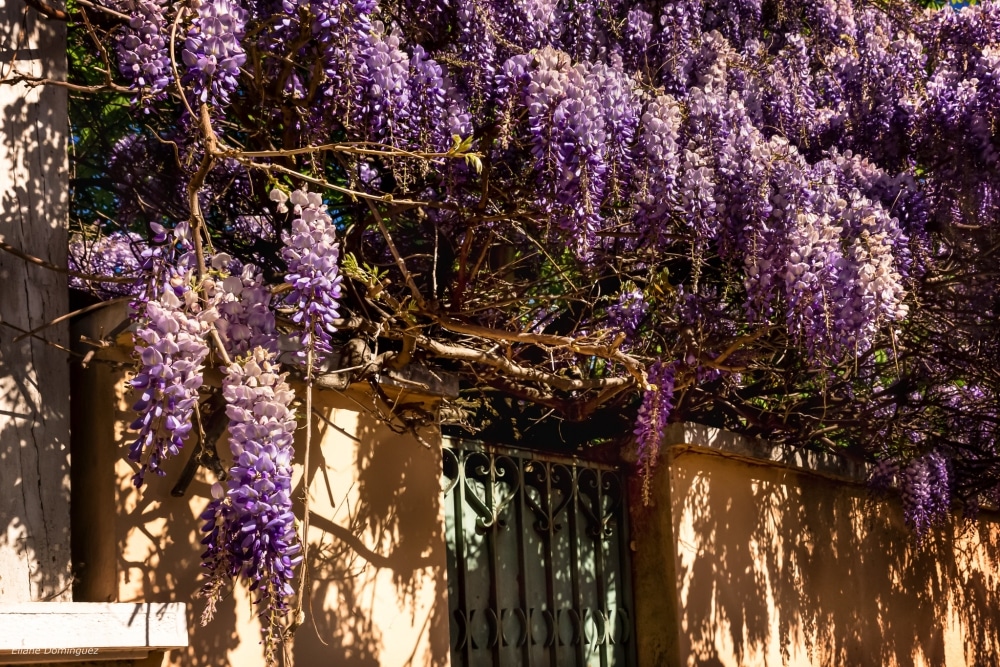
The Guillotière District
La Guillotière doesn’t hide who it is. It hums. A little chaotic. A lot alive. Between the Rhône’s banks and the train lines, this part of Lyon has long been a landing point—for newcomers, for ideas, for change. It’s never quite the same from one year to the next.
On a single street, smells shift from spices to roasted meat, incense to fresh bread. Music spills from cafés, sometimes mixing with the call to prayer, sometimes with the clink of glasses on a terrace. Layers of culture stack here—Middle Eastern, Asian, African, Latin—and none erases the other. They coexist. Sometimes bump into each other. Always present.
Restaurants and shops to discover:
Eating in La Guillotière means giving up any plan. What catches the eye—or nose—leads the way. Maybe it’s a falafel that defies description, a steaming bowl of pho, or a dish scribbled in chalk in a language that needs no translation once it reaches the table.
Shops follow the same energy. Not curated. Just full of surprises. Textiles from far off, secondhand records, ceramics fired nearby. Every door opens on something unexpected.
Guillotière isn’t polished, and that’s its strength. It pulses. It welcomes. It challenges a little, too. But for those who wander with open eyes and time to spare, it offers more than just variety. It offers a kind of human collage—unfinished, imperfect, and entirely alive.

